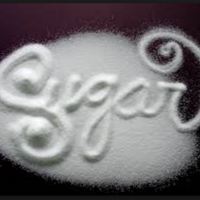
Accurate carbohydrate counting had better not require too much work, or nobody’s going to do it. Only the carbohydrate (not the fat or protein) in foods causes a significant rise in blood glucose level after eating. How much it rises depends on the amount of carbohydrate in the foods eaten, the size of the portions, and the amount of insulin available in the body. Eating the same amount of carbohydrate at the same meals and snacks every day can make it easier for a person to keep their blood glucose levels consistent.
Carbohydrates include sugars, including sucrose (table sugar), fructose (fruit sugar), and lactose (milk sugar), as well as starches, which include much of the carbohydrate found in bread, rice, cereal, and potatoes. When you eat something that contains starch, the starch is broken down into simple sugars before entering your bloodstream.
Both sugars and starches will raise blood glucose by the same amount and at about the same rate. For example, a cup of rice containing 45 grams of starch will raise blood glucose level just as much as a can of regular, sugar-sweetened soda containing 45 grams of sugar. In other words, be concerned about the “total carbohydrate” content of food.
Okay, so let’s figure this out:
Total carbohydrate includes everything in the food that is carbohydrate: starch, fiber, sugars, and sugar alcohols. Remember to look for the number next to the little “g” (which stands for grams). The percentage (%) that follows it is the government’s estimate of how much of your daily recommended food intake included in a serving of this food item. The percentage of daily requirements is irrelevant to carbohydrate counting.
When counting carbohydrates, it is not necessary to know how much sugar a food item contains. Remember, sugars are just a type of carbohydrate and included in the total carbohydrate listings on the label.
Subtract all the fiber grams from the total carbohydrate count since fiber does not raise blood glucose. For example, a food item containing 24 g of total carbohydrate and 4 g of fiber should be counted as 20 g carbohydrate (24 – 4 = 20).
If the food item contains sugar alcohols, then subtract half the grams of sugar alcohols from the total carbohydrate count, since sugar alcohols affect blood glucose half as much as ordinary carbohydrates. For example, a food item containing 18 g total carbohydrate and 8 g of sugar alcohols should be counted as 14 g carbohydrate (18 – 4 (four is half of the 8 g) = 14). Sugar alcohols are sweeteners found in many reduced-calorie foods such as gum, mints, yogurt, ice cream, cookies, and candy. They typically go by names ending in “ol,” such as sorbitol, maltitol, lactitol, mannitol, and xylitol. Two sugar alcohols that do not have the –ol suffix are hydrogenated starch hydrolysates (HSH) and isomalt.
Remember: Be careful about serving sizes. If a serving size is 1/2 cup, and you have 1 cup, you will need to double the carbohydrate amount.
Now to figure out the carbohydrate-sugar conversion:
TAKE # OF GRAMS OF CARBS & DIVIDE BY 4 TO FIND THE EQUIVALENT # OF TEASPOONS OF SUGAR.
If a can of evaporated milk contains 300 calories and 45 g carbs, then it contains/equals 11 tsp sugar. (45g divided by 4 = 11)
The mainstay of a healthy diet remains a rich variety of vegetables with an emphasis on green leafy, low glycemic index fruits, lean proteins and low-mercury fish. Water is the best beverage.
Target Goal of Daily Sugar intake should be 20 grams.
Ready to take your health to the next level and take charge of it?
Register for the Nine Steps to Healthy Lifestyle program and learn at your own pace with nine weekly videos along with weekly worksheets at such an amazing investment for you!
You’ll receive cool bonuses as well;) just because you are taking your health seriously and committing to a healthier YOU!
Register by clicking this link TODAY;)
Your Health is Worth it because YOU are Worth it!
Tags: carbohydrate counting, clean eating, diabetes, Healthy Eating, sugar, weight loss
Leave A Reply (No comments So Far)
No comments yet